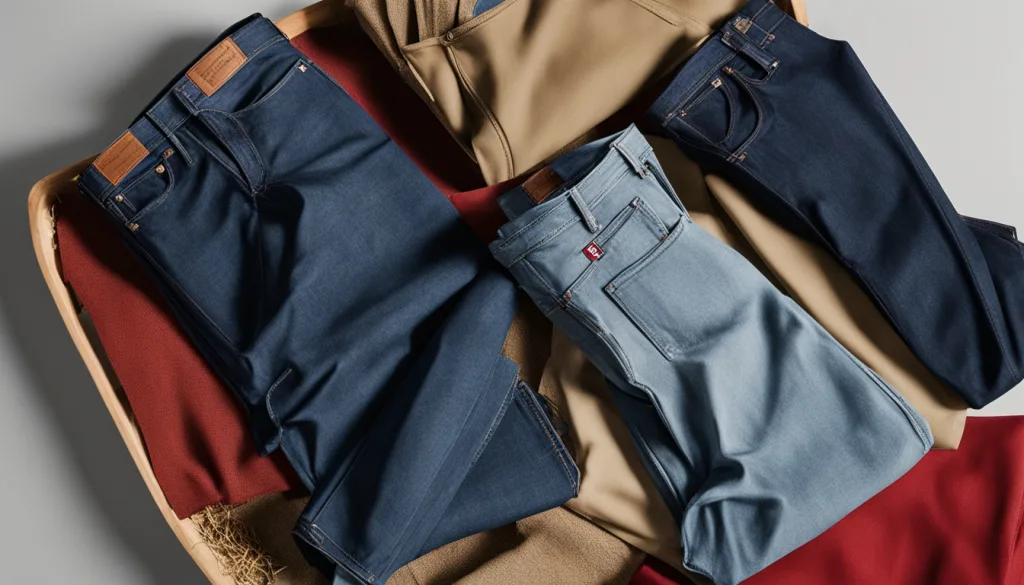Consumer Education and Its Impact on Sustainable Purchasing
Connect With Us Today
Consider us for your next production run. Why wait? Send us your questions here.
In today’s world, the way we shop is changing fast. Consumer education plays a key role in promoting sustainable purchasing. The concern is real: we might need three planets by 2050 to keep up with our lifestyle, if we don’t change1. This makes teaching people about the environment super important. Knowing environmental education for consumers is more crucial than ever. It helps us choose wisely and pushes for big shifts in how things are made and used, aiming for sustainability2. Seeing more companies report on their green efforts shows consumer education‘s big impact on making things better1.
Key Takeaways
- Understanding the pivotal role consumer education has in driving sustainable purchasing decisions.
- Recognizing the direct link between consumer awareness and the adoption of conscious consumerism practices.
- Identifying the current trends of environmental impact within consumer education in the sustainable fashion sector.
- Appreciating the relationship between consumer education initiatives and corporate sustainability reporting.
- Assessing the impact of consumer behavior on global resources and the urgent need for a sustainable approach.
The Necessity of Consumer Education in the Sustainable Fashion Industry
Learning why consumer education is crucial in sustainable fashion helps fight the environmental effects of our clothes. Levi Strauss & Co. explored this by studying the impact of Levi’s 501 jeans throughout their life. They discovered how consumers can save resources and improve processes by changing their habits3.
This study showed that how we take care of our clothes after buying them has a big environmental impact. The Care Tag for Our Planet Program suggests washing less often, using cold water, drying on a line, and giving away clothes we don’t wear. These simple steps can make clothes last longer and lessen our environmental footprint3. This program shows how companies and people can work together to make fashion more ethical.
Teaching consumers about sustainability projects like Levi’s Field of Jeans makes them powerful agents of change. This project gathered over 18,850 pairs of jeans, creating art and keeping 12 tons of clothing out of landfills3. In China, a growing interest in second-hand fashion shows that informed consumers prefer more responsible fashion choices4.
- Engaged consumers help lessen the fashion industry’s harmful effects on nature.
- Well-informed shoppers often choose ethical fashion brands. These brands support good working conditions, equality, and fair pay5.
- Sustainable fashion also helps keep traditional crafting skills alive and supports local jobs by using materials from the area5.
Research in Italy on luxury products indicates that young shoppers are thinking more about sustainability. This global trend shows how education can change what we buy4. More young people in China are also open to buying used clothes, seeing it as a good choice for the planet4.
The fashion world is listening to these educated customers, leading to more eco-friendly clothes5. The more customers ask for sustainable options, the more brands will offer them. This encourages a move to slow fashion. Slow fashion values quality and long-lasting items over quickly changing trends5.
Together, consumer knowledge and company responsibility are making sustainability a core value in fashion. This change is shaping what we buy and leading to a greener future345.

| Initiative | Impact | Sustainable Practices Promoted |
|---|---|---|
| Levi’s Care Tag for Our Planet | Reduces water usage and carbon emissions from laundering3 | Wash less, wash in cold, line dry, donate |
| Levi’s Field of Jeans Project | Collected 12 tons of clothing, promoting recycling and waste reduction3 | Clothing donations |
| Chinese Second-hand Market | Decreases environmental impact of fast fashion4 | Purchasing second-hand clothing |
| Local Artisan Support | Preserves traditional crafts and boosts local economies5 | Buying handcrafted, locally sourced items |
The Role of Big Corporations in Enhancing Sustainable Consumer Behavior
Big corporations have a huge impact on how people shop, especially in pushing for greener choices. By 2050, our world will have 9.8 billion people1. So, companies like Levi’s play a big part in moving us towards a greener future. They show this by making their famous Levi’s 501 jeans in a way that saves a lot of water. Usually, making one pair needs 10,000 liters of water1. Levi’s is changing this to help our planet.

Levi’s started the Care Tag for Our Planet program to make customers more eco-friendly. This program teaches people how to take care of their clothes in a way that’s better for the earth. The Field of Jeans project is another way Levi’s is helping, by asking customers to recycle their jeans. This saves precious resources.
There’s a big difference in how much stuff people use in rich versus poor countries1. Rich countries use ten times more. This big gap makes it clear we need to think about how much we consume, especially in fashion. By creating programs that encourage smarter choices, companies can reduce their carbon footprint and push for a world that values sustainability.
The way Levi’s manages water is also helping the UN-Water family’s goals1. Their work is part of a bigger plan to make sure we have enough clean water. They’re showing others how to use less water and be more eco-friendly.
Companies like Levi’s are at the forefront of fighting climate change1. Their work with global groups and the OECD shows how powerful corporate responsibility and educating shoppers can be. Together, they’re working towards a greener future.
Big businesses like Levi’s are showing how sustainability can be part of a successful business. They’re responding to what people want and leading the way for others in the industry.
Energy-saving products show how companies and customer needs align on being eco-friendly. Since 2005, the EU has set rules for how much energy products can use. This shows that big corporations do more than just follow rules; they help shape a future where being green is key.
In the end, companies such as Levi’s show how big business can drive positive change. Through looking at their impact, teaching customers, and working on worldwide efforts, they’re making business and caring for the earth go hand in hand.
Promoting Sustainability Through Consumer Awareness
The role of consumer awareness in promoting sustainability is crucial. When people know more, they can push markets towards better choices. This shift helps the whole economy move in a green direction. The OECD’s work, with its initiatives like the Marrakech Task Forces, is a great example of this effort6.
In Canada, changes to the Energy Efficiency Act in 2006 highlight how laws can support green actions. These changes aim at reducing home energy use, a major factor for many families6. The EU has also stepped up, setting new rules for the efficiency of products like boilers and fridges. They hope to extend these rules to include more items, like electronics6.
Sustainable fashion campaigns and business efforts add to these policies. They make consumers aware of the benefits of green materials and methods. It’s not just about selling products but sharing a message of care for our future. These campaigns connect with people who value both how things are made and how they look and work.
The link between what people want and the laws in place is key to a greener future. In the EU, pushing for efficient appliances is one approach. The Marrakech Task Forces’ work in educating people about green living is another important strategy. Both actions are crucial for promoting sustainability widely6.
Teaching people about eco-friendly practices is a continuous journey. As more people understand the impact of their choices, we hope they become sustainability champions. They can lead by example in their buying habits, talks, and community works. Imagine a world where every product chosen supports a green future. That’s the dream of enhancing consumer awareness in sustainable fashion.
Evaluating the SWOT of Consumer Education in Fashion Sustainability
The SWOT analysis of consumer education in fashion sustainability reveals how buyers relate to green clothing. The strengths in consumer empowerment are clear. People who know more tend to buy wisely, choosing quality over price. This practice helps clothes last longer7. But, the challenges in changing consumption patterns are significant. An attitude-behavior gap exists. Even though about 65% of buyers worry about the environment, they don’t always shop green7.
Technology brings chances and challenges. It lets brands connect with customers in new ways. Yet, it can lead to greenwashing. Being honest is key. Up to 60% of shoppers stick with brands that truly support ethical fashion. This is especially true among young people, opening up a big market opportunity78. The growth of resale markets also looks promising. Luxury brands might get 20% of their sales from second-hand products by 20307.
Still, economic barriers can stop people from buying sustainable goods. They are often pricier and not as readily available. Despite up to 68% of customers willing to spend more on green products, only a few do so consistently78. This shows the importance of furthering customer education. Making “sustainable fashion” the norm is essential. With better awareness and lowered obstacles, the fashion industry can move towards being more eco-friendly. Ongoing studies into sustainable fashion behaviors highlight this shift towards ethical fashion
.
FAQ
What is consumer education in sustainable fashion?
Why is consumer education important in the sustainable fashion industry?
How can big corporations enhance sustainable consumer behavior?
How does consumer awareness promote sustainability?
What are the strengths, weaknesses, opportunities, and threats of consumer education in fashion sustainability?
Source Links
- https://www.un.org/sustainabledevelopment/sustainable-consumption-production/
- https://unctad.org/meetings/en/SessionalDocuments/cicplpd17_en.pdf
- https://sustainablebrands.com/read/behavior-change/why-consumer-education-is-vital-for-corporate-sustainability-success
- https://www.ncbi.nlm.nih.gov/pmc/articles/PMC10799023/
- https://www.realthread.com/blog/the-impact-of-sustainable-fashion-on-local-communities-and-artisans
- https://www.oecd.org/greengrowth/40317373.pdf
- https://www.bain.com/insights/how-brands-can-embrace-the-sustainable-fashion-opportunity/
- https://www.ncbi.nlm.nih.gov/pmc/articles/PMC9952240/
Latest News
How Collaboration Shapes Consumer Preferences in Sportswear
Navigating Consumer Rights and Warranties in Sportswear Sales
Artificial Intelligence in Fashion Forecasting and Trend Analysis
The Shift Towards Inclusive Sizing in Sportswear: Consumer Reactions
The Global Expansion of Luxury Sportswear Brands
From Sketch to Gym: The Design Process of Fashionable Sportswear
Understanding the Role of Trade Associations in Sportswear Compliance
How Economic Trends Influence Consumer Spending on Sportswear
Learning from Successful Global Market Entries
Best Practices for Managing Cross-Cultural Teams
Using Technology to Fight Counterfeit Fashion Products
Carbon Nanotube Fabrics for Superior Strength and Flexibility
The Growth of Fitness Tracking Apparel in Health and Wellness
Exploring the Influence of Social Proof in Sportswear Purchasing
Strategies for Managing Compliance in a Multinational Operation
Trends in Global Footwear: Performance Meets Lifestyle
The Role of Artificial Intelligence in Tracking Supply Chain Operations
Evaluating the Success of Sportswear Collaborative Projects
Evaluating the Potential of Emerging Markets
Global Shifts Towards Gender-Neutral Sportswear
Share This Article
Latest Articles



















